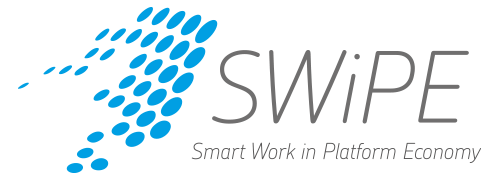
I’m known as something of a geek. I’ve been one since childhood. I spent my slow early years devouring every science book I could find on the shelves of Järvelä library. This choice of reading material may have been the single best investment of my life, in addition learning English. Let me tell you why.
Imagination is humanity’s most adorable feature – at least in my opinion. The ability to break free from the rigidity of established formulas and the historical perspective of data in order to imagine something far beyond the everyday is something quite special. I can’t come up with a more perfect feature for a conscious being.
At its best, imagination is the result of both feeling and thought. In primitive times it saved us from clutches of unforeseen dangers. Scepticism and the ability to fear kept us alive. On the other hand, that same imagination, combined with courage and curiosity, enabled us to break free from subsistence to become the success story that we are now.
Imagination was crucial to the emergence of the sciences during the enlightenment. Over time, in response to our own deficiencies, we developed information technology, which we are now taking even further. But instead of being in awe of what we’ve achieved, like Dr. Frankenstein, we are afraid of what we have created. Instead of fear, we would do well to remember our own strengths and to use them. What we need to do is develop scenarios of the future, and seek to manage change, so that we can benefit from our creation as we had originally hoped, without losing ourselves in the process.
Suffering can be alleviated by the realisation that there will be no return to the past. Technology are exactly that which the problems we have created over time demand. The problems of the environment, resource scarcity, aging, population growth – each one of these can be addressed by leveraging information technology to stave off the abject misery threatening humanity. We are in the process of creating a solution to our own imperfection – for our salvation.
How, then, to live together with technology? The answer lies in cooperation. Machines are good at math and in identifying nonlinearities. We, on the other hand, we are bad in both. Therefore, let’s let the computer take care of work that needs speed, computing capacity, strength, and routine. We, in turn, we integrate computer-generated information to where we ourselves are strong: in creating scenarios drawing on our imagination, in cooperation, in empathy, and in the melding of minds to create more together. This way, we speed up “the evolution of thought”. We need this, because the 25 year cycles of human generations are far too slow to overcome the problems we have created.
At least for me, this creates a faith in the future – and, I’ll continue feeding my imagination with a generous diet of science books.
About the author: Leena Mörttinen is the Managing Director of the Finnish Association of Family Businesses. The Association is a partner in the SWiPE research project in particular in the examination of organisational renewal and in research on new flexible ways of working.
